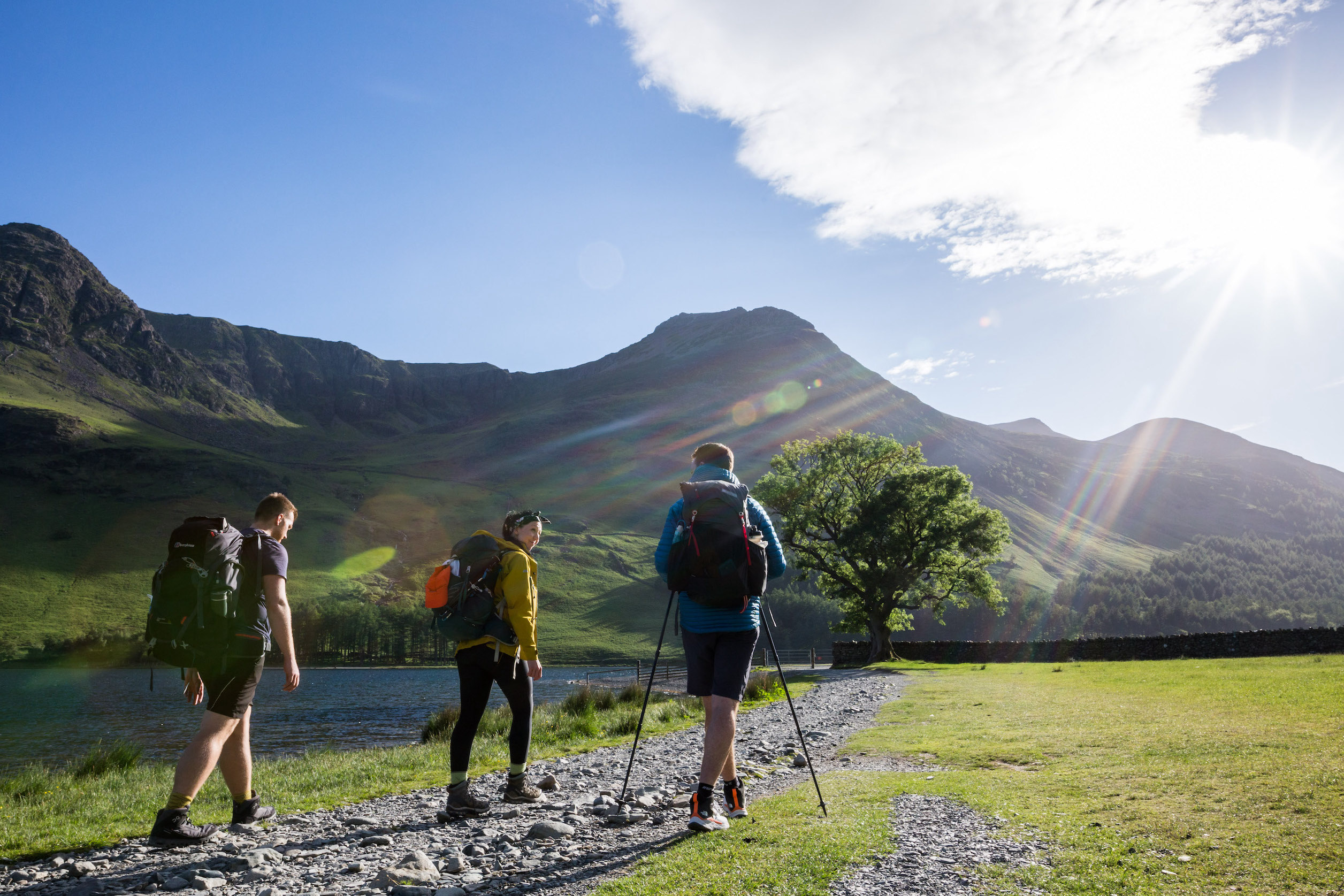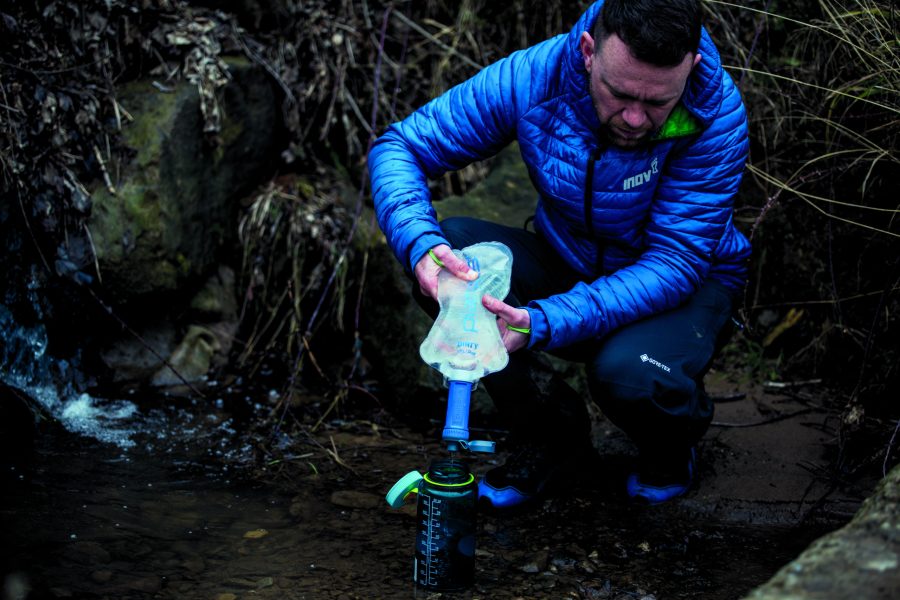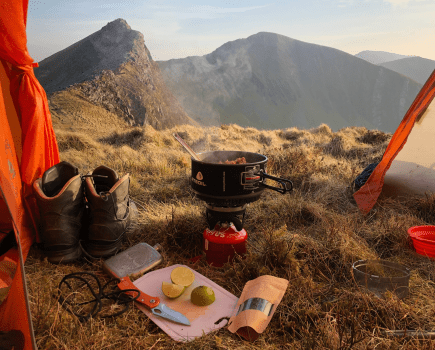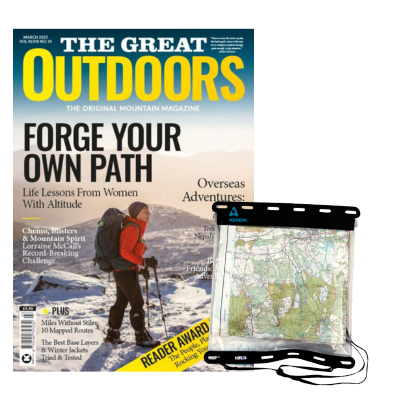This advertising feature is sponsored by our friends at Platypus.
You won’t get very far (figuratively and literally) as a long-distance hiker if you neglect the importance of hydration. Staying sufficiently topped up with fresh H20 is absolutely vital to a positive experience on the trail.
Hydration is vital not only for our health, but also for our performance. Water regulates your body temperature, lubricates your joints, and helps transport nutrients to give you energy.
In other words, enables your body perform at its highest level. Conversely, dehydration will leave you feeling fatigued and light-headed, with reduced stamina and strength for the miles ahead. Proper hydration is also an essential part of avoiding heat-related health problems like heat exhaustion or the more serious heatstroke.
Here’s how to avoid this pitfall and ensure you stay amply hydrated for your trail adventures.
- Drink more than you think you need to

A warm day in the Lake District. Photo: Jessie Long
On warm, sunny days (even in Britain, they do occasionally happen!) it’s very easy to become dehydrated if you don’t drink enough; but dehydration can also be a real problem on cold and crisp winter days, because you might not feel as thirsty.
A good tactic is to always drink slightly more than you think you need to, rather than not enough.
By erring on the side of caution, you’ll give yourself a better chance of staving off dehydration and ensuring your perform to your maximum potential.
- Guzzle a litre at the beginning of each day
Don’t start you day on the edge of dehydration. Down a good volume of water – perhaps one litre – before you start smashing out the miles.
That way your body will be amply hydrated for the exertion ahead and you’ll be starting off from a good foundation.
A tactic to help with this approach is to camp near a water source such as a stream or river, or to fill up your water bottles and reservoirs in the early evening in preparation for nightfall.
- Resist the temptation of a cheeky pint
As refreshing and thirst-quenching as it might seem, alcohol is a diuretic, meaning it can make you dehydrated.
So, sad as it may be, it’s best to avoid a lunchtime lager or evening glass of pinot, and instead stick to soft drinks.

The Quickdraw filters water at 2L+ per minute: much faster than other “infuriatingly slow” filters. Photo: Jessie Long
For a real hit of hydration, you could also opt for specialist rehydration tablets, which are mixed with water to create a balanced formula containing electrolytes, salts, glucose and minerals. On hot, sunny days, these can be a godsend.
- Don’t delay – sup little and often
It’s not advisable to wait until you feel really thirsty before downing a whole bottle. Instead, you should replenish your fluids regularly (up to 300ml per 20 minutes of strenuous hiking is often cited as a good target).
Hydration reservoirs with an in-built hose make this easy on-the-move, for example, without constant stopping and starting.
How much water you need will vary on many factors – the temperature, terrain and mileage, as well as your age, body type and sweat rate – and listening to your body is always a wise strategy.
- Learn to filter like a pro
Traditional wisdom dictates that you should carry as much water as possible with from the beginning of your walk. But that principle is out-dated – it’s heavy, inefficient and unnecessary, particularly in the soggy UK where water is widely available.
Instead, with a high-quality filter, you can remove bacteria, protozoa and viruses from dirty water and transform it into clean, drinkable water on-the-go.
A good strategy is to do this every time you pass a fast-running stream, drinking directly from the filter to satisfy your initial thirst, and then filtering more water into a separate container for use over the next few miles before you arrive at the next water source.
Remember to check maps in advance and become familiar with the location of water sources en-route, so you can plan accordingly.

Collected stream water ready to be filtered free of bacteria and protozoa by the Platypus Quickdraw. Photo: Jessie Long
- Choose the right filter
Needless to say, choosing an effective, easy-to-use, reliable filter is also crucial. On recent 107km fastpacking adventure on a north-eastern stretch of the England Coast Path (read about it in the May issue of The Great Outdoors), I used the Platypus QuickDraw Microfilter System, and it worked excellently for me.
I was particularly impressed by the flow rate of 2L+ per minute, which was far superior than other infuriatingly-slow filters I’ve tested in the past, while the versatility of functions was top-notch too.
The QuickDraw enabled me to rehydrate quickly and easily on-the-go, and thus ensured I didn’t have to constantly and inefficiently lug around heavy litres in my backpack.
You can use the QuickDraw (£50, 95g) in two main ways.
The simplest option is to fill up the included 1L soft flask with dirty water, screw on the hollowfibre filter mechanism, and drink directly from the filter’s spout.
Alternatively, to boost your water supplies for the trail ahead, you can squeeze the soft flask (rather than drink directly from it) and dispense the clean water into a separate bottle.
I used both options on the trail, quenching my initial thirst at the stream before filling up my 1L Nalgene with clean water for the miles ahead.
With all bacteria and protozoa filtered out, the QuickDraw put my mind at rest and allowed me to simply enjoy the beautiful coastal walking.








